SEO Blog Co-Pilot is a tool that helps users generate blog posts by selecting a topic, customizing details, analyzing search results, researching keywords, optimizing for SEO, creating an outline, and finally review the post with meta details and FAQ schema.
How to Use the SEO Blog Co-Pilot:
Step 1: Select from Three Types to Begin
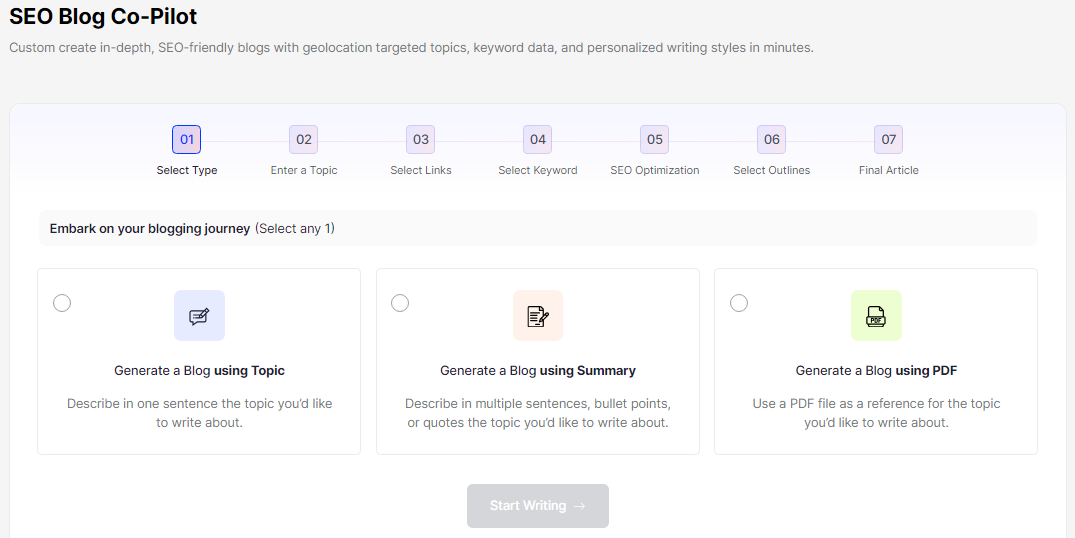
You can use one of three types to generate your blog post:
- Generate a Blog using Topic: Describe in one sentence the topic you’d like to write about.
- Generate a Blog using Summary: Describe in multiple sentences, bullet points, or quotes the topic you’d like to write about.
- Generate a Blog using PDF: Use a PDF file as a reference for the topic you’d like to write about.
Step 2: Enter the Topic Details

Enter your topic (or upload your PDF if you selected the PDF option), select your geo-location, choose your AI Model, Tone of Voice, and Language.
Step 3: Select Top Google Search Results
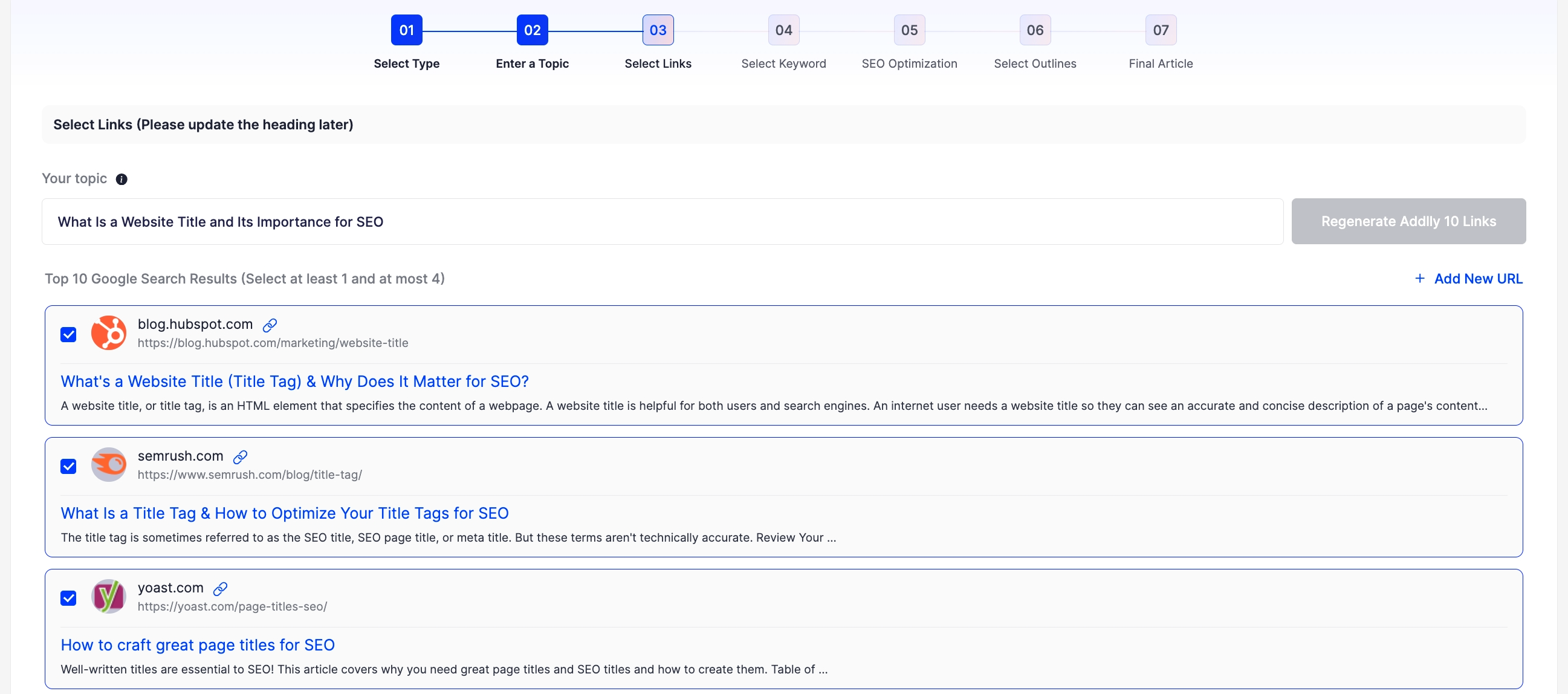
Select the top Google search results you want to analyse (select at least 1 and at most 4). You can also add your own URL.
Step 4: Research Keywords
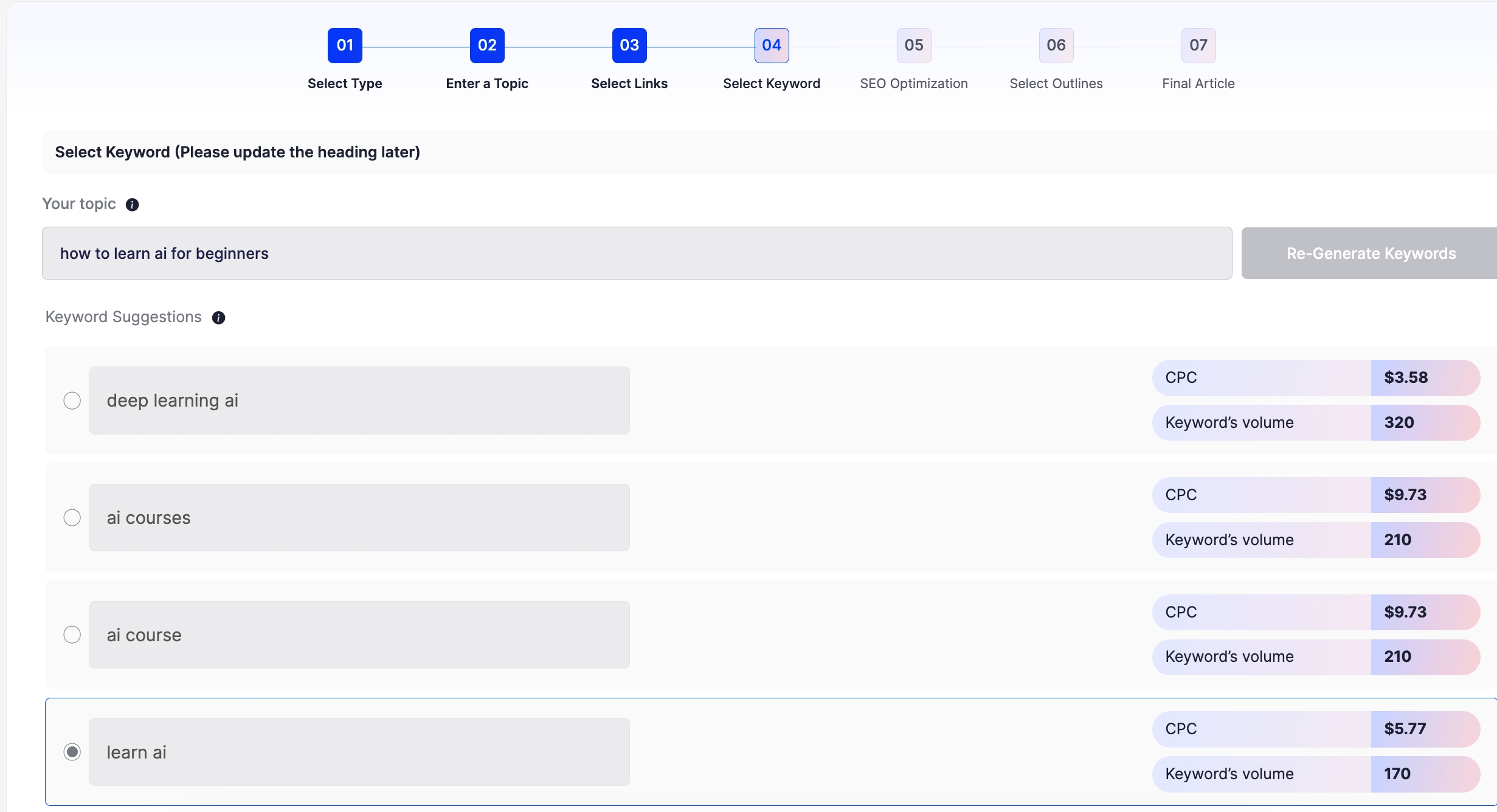
Select the keywords you want to target. You can see the CPC and search volume for each keyword, and regenerate the keyword suggestions if needed.
Step 5: Optimize for SEO
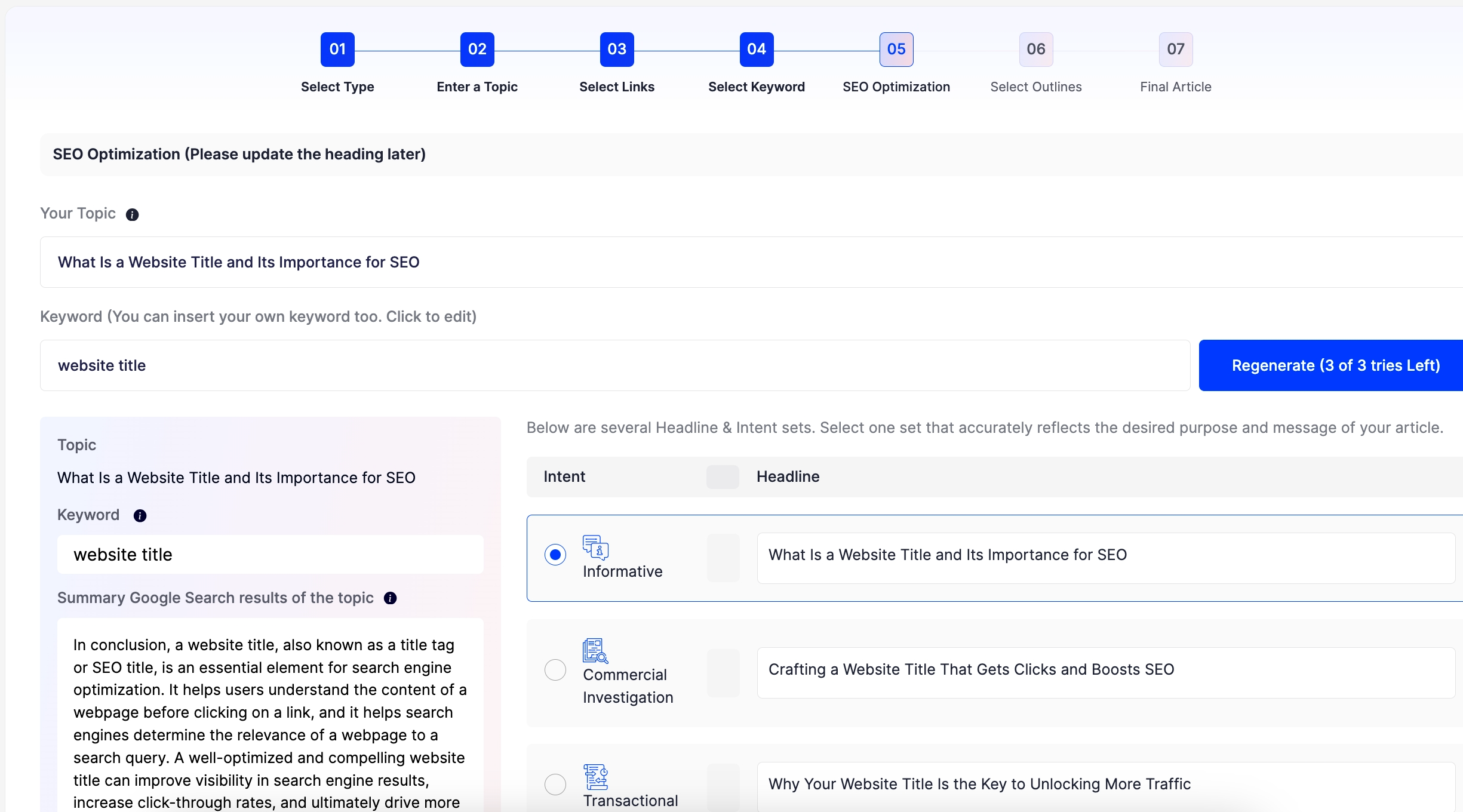
The tool will generate several Headline & Intent sets. Select one set that accurately reflects the desired purpose and message of your article.
Step 6: Create the Outline

Select the outlines you want to use for your article. The blog post will be generated based on the outline set you choose. Select a minimum of four outline sections from only one set. You can also add your own outline sections.
Step 7: Review and Publish
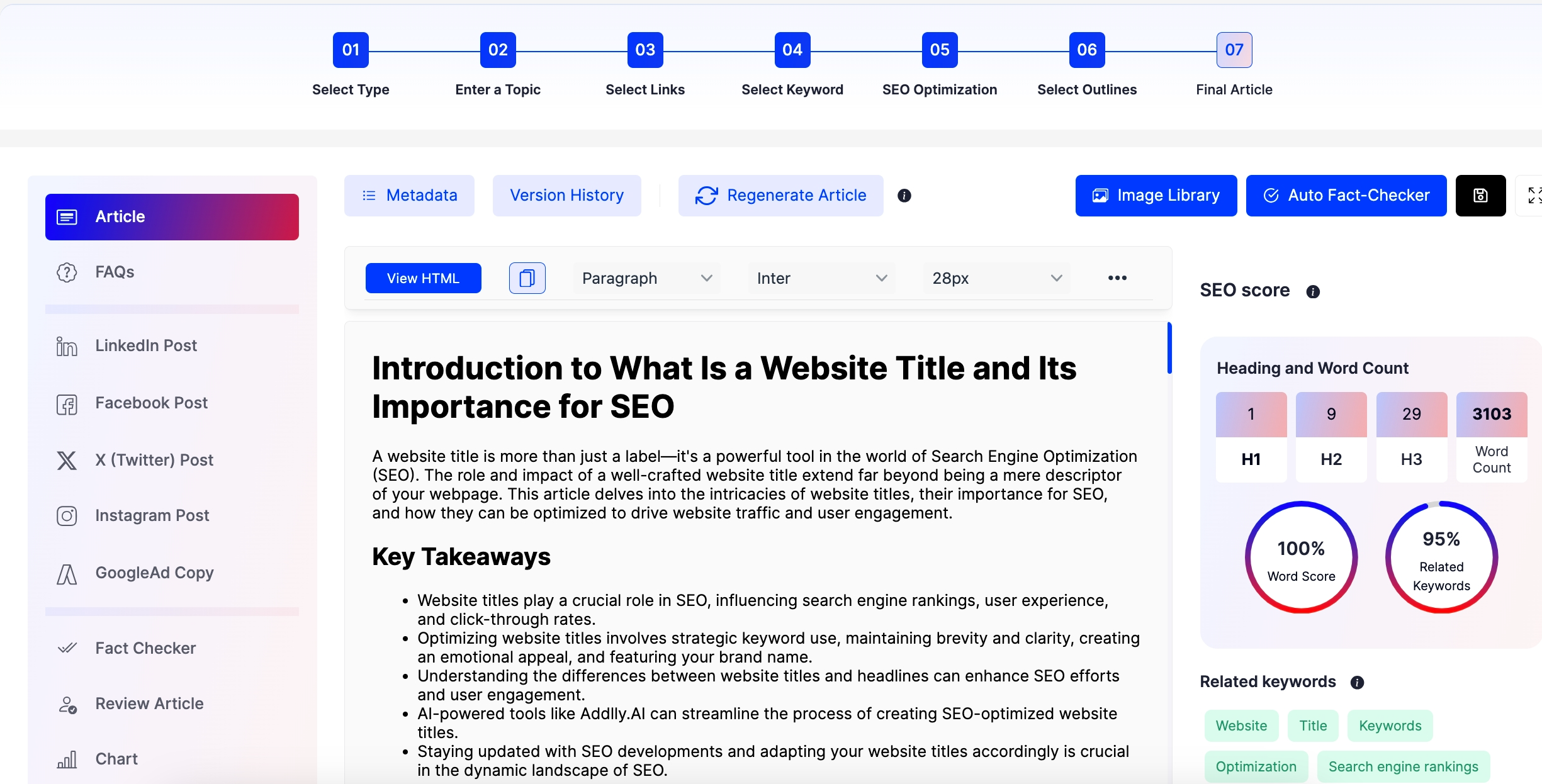
The SEO Blog Co-Pilot will generate the blog post in around 2 minutes, complete with meta details and FAQ schema. From the sidebar, you can choose to repurpose the blog into various formats, such as LinkedIn Post, Facebook Post, Instagram Post, or Google Ad Copy.


